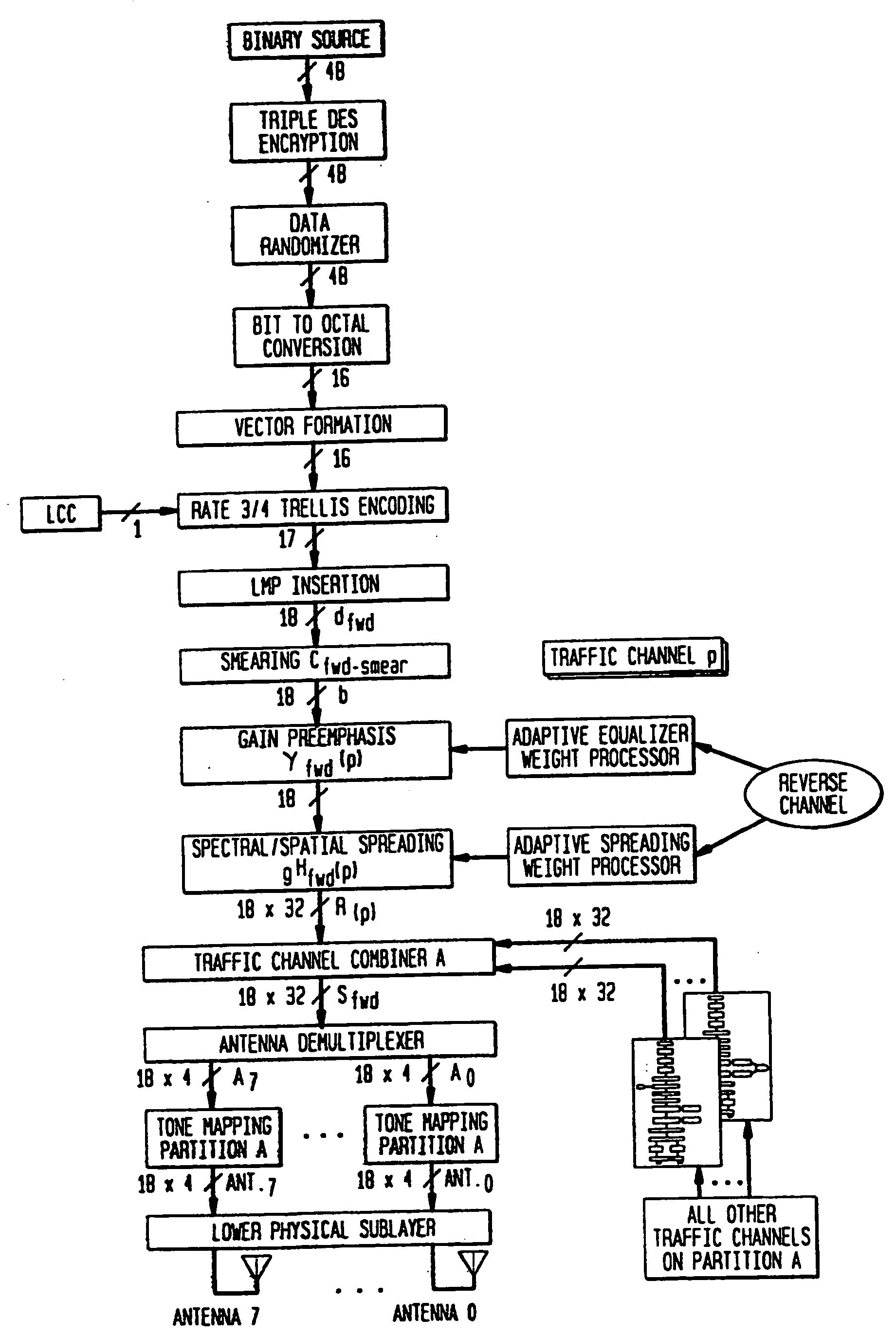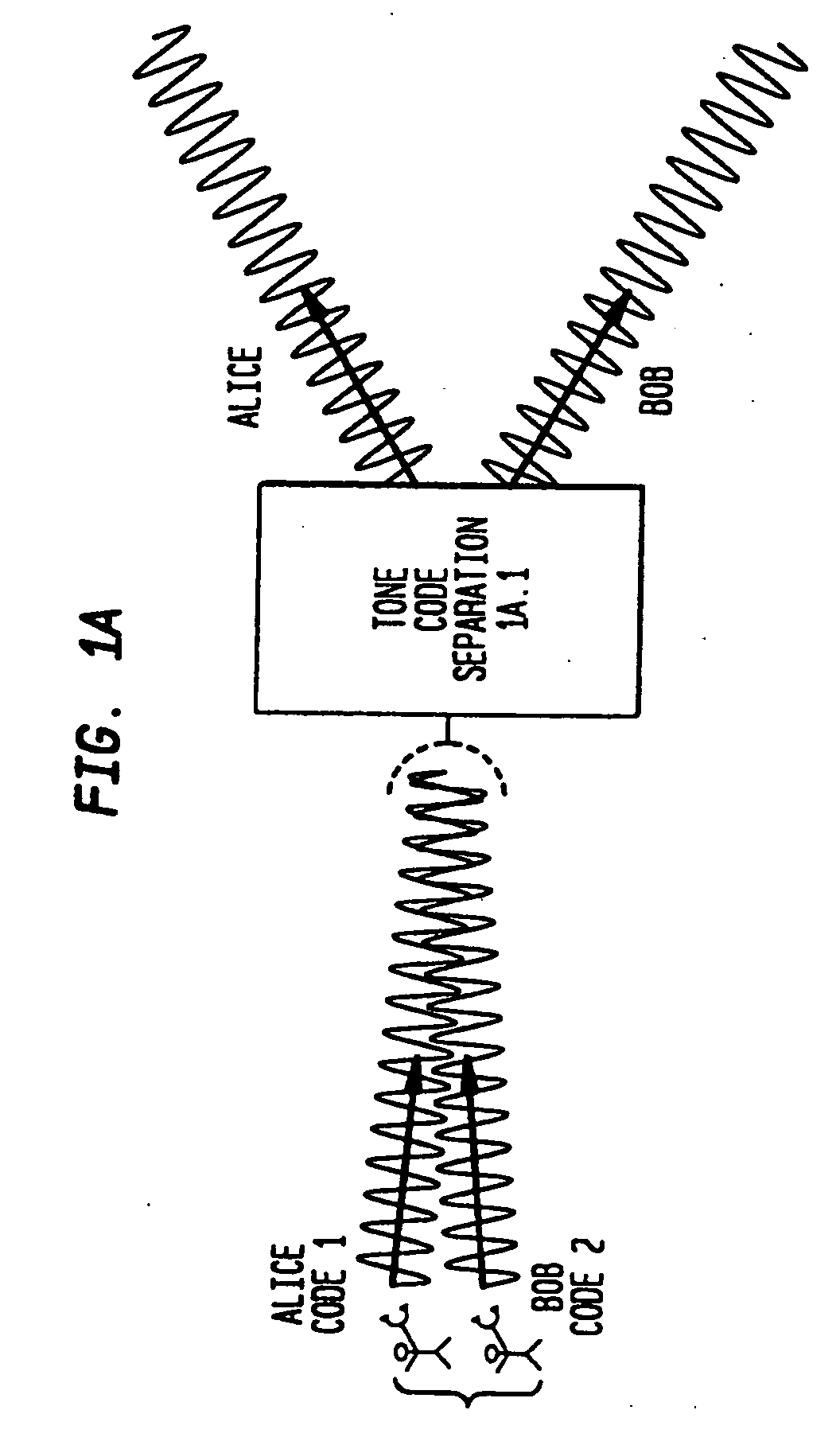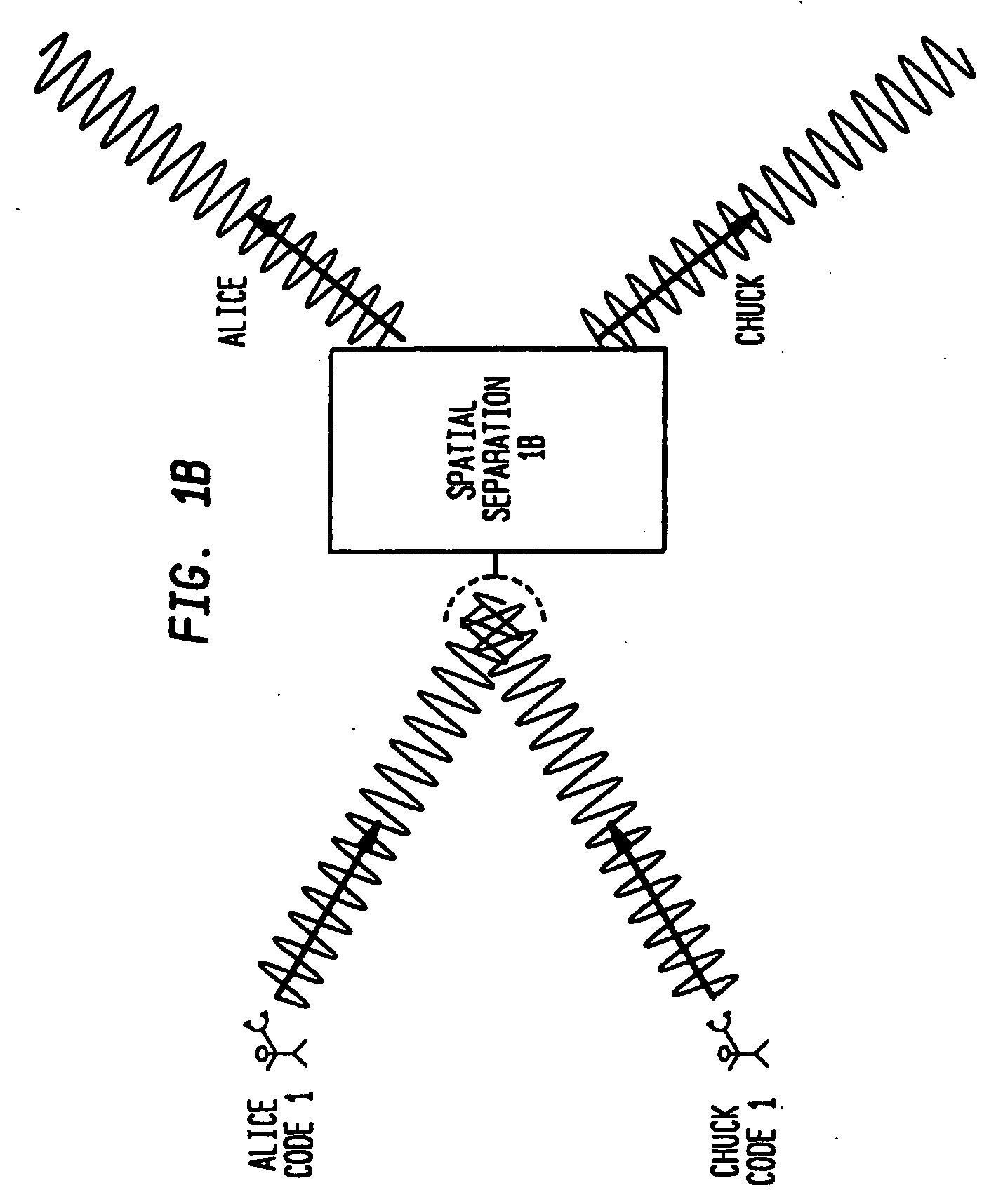Highly bandwidth-efficient communications
- Summary
- Abstract
- Description
- Claims
- Application Information
AI Technical Summary
Benefits of technology
Problems solved by technology
Method used
Image
Examples
Embodiment Construction
[0148] In what follows, aspects of the principles of the invention will be discussed in a tutorial illustrating an example of pure spectral diversity, an example of pure spatial diversity, and an example of mixed spectral and spatial diversity. This will be followed by a discussion of the invention in a high-level overview that will include an explanation of the waveform used in the practice of an aspect of this invention. This will be followed by a description of more specific “details of the invention,” and then by a detailed description of a “specific embodiment of the invention.”
High Level Overview of the Invention
Introduction
[0149] This invention is based, in part, on the realization that there is an analogy between the mathematical description of beams formed by multi-element adaptive, or phased, antenna arrays and the mathematical description of signals that are formatted according to certain multiple access schemes, such as the exemplary DMT-SC. Based on this realization...
PUM
 Login to View More
Login to View More Abstract
Description
Claims
Application Information
 Login to View More
Login to View More - R&D
- Intellectual Property
- Life Sciences
- Materials
- Tech Scout
- Unparalleled Data Quality
- Higher Quality Content
- 60% Fewer Hallucinations
Browse by: Latest US Patents, China's latest patents, Technical Efficacy Thesaurus, Application Domain, Technology Topic, Popular Technical Reports.
© 2025 PatSnap. All rights reserved.Legal|Privacy policy|Modern Slavery Act Transparency Statement|Sitemap|About US| Contact US: help@patsnap.com



